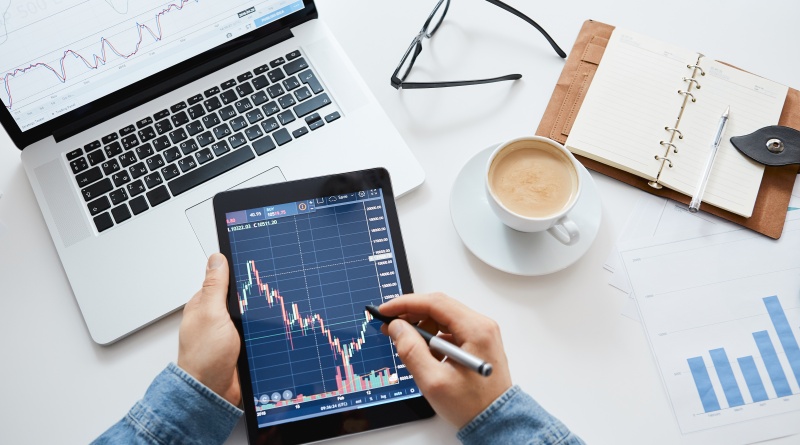In an era where technology continues to redefine the contours of traditional investing, simulated trading has emerged as a formidable tool for both novice and seasoned traders alike. Imagine navigating the turbulent waters of the financial markets without the imminent risk of losing real money.
Simulated trading platforms offer this enticing opportunity, allowing individuals to hone their strategies, test theories, and build confidence. However, while the benefits are appealing—such as learning the ropes of trading psychology and practicing without financial consequences—there lurks a question: How closely does this digital experience mimic the raw intensity of actual trading? This article delves into the nuanced landscape of simulated trading, unraveling its benefits while illuminating the inherent limitations that might cloud its efficacy.
It’s a journey of understanding that challenges one to ponder not just the mechanics of trading, but the very essence of what it means to engage with the markets.
Benefits of Simulated Trading

Simulated trading offers a treasury of benefits, making it an appealing pursuit for both budding traders and seasoned investors. First and foremost, it provides a risk-free environment to hone trading strategies without the fear of financial loss.
Imagine standing at the edge of a vast ocean, ready to dive in without the threat of drowning—this is the freedom simulated trading grants. It also allows for the exploration of various trading styles, enabling users to experiment with everything from day trading to long-term investing, uncovering what truly resonates with their risk appetites and goals.
For those aiming to replicate the nuances of live trading, incorporating depth of market live tools enhances the experience significantly. These tools allow traders to monitor real-time order book data, including bid and ask levels, giving them a granular view of market liquidity and order flow.
By using such tools, users can refine their strategies, better understand market sentiment, and practice high-precision execution in a simulated setting. There’s an exhilarating sense of control; users can tweak parameters and adjust their approaches based on real-time market conditions, all while observing the effects of their decisions.
Furthermore, this practice tool builds confidence, empowering traders to enter the real market with a well-informed mindset and a tactical edge. The beauty lies in its ability to mirror real market dynamics, promoting essential skills such as technical analysis and market timing while fostering emotional resilience—an invaluable asset when the stakes become real.
In essence, simulated trading acts as both a laboratory and a proving ground, laying the groundwork for a successful trading journey.
Limitations of Simulated Trading

Simulated trading, while an invaluable tool for developing skills, presents several notable limitations that can distort a trader’s understanding of real market dynamics. Firstly, the lack of emotional engagement in a simulated environment can lead users to take excessive risks, operating under a false sense of security.
After all, losing virtual moneydoesn’tt sting like real losses; this detachment can cultivate poor decision-making habits. Additionally, simulated platforms often fail to replicate the intricacies of slippage and liquidity which can significantly impact trades in live markets.
Traders might execute transactions filled in their simulations, only to find that market conditions, in reality, are far less forgiving. Moreover, without the pressing constraints of time—traders can pause or rewind simulations—participants may become complacent, missing out on the critical necessity of reacting swiftly to changing market conditions.
Thus, while simulated trading serves as a useful entry point, it cannot wholly prepare individuals for the unpredictable and often volatile nature of actual trading.
Comparing Simulated Trading with Real Trading

When comparing simulated trading with real trading, one quickly encounters a landscape fraught with striking contrasts. In the digital realm of simulations, traders can experiment with strategies in a risk-free environment, where the stakes exist only on a theoretical level.
This can lead to a false sense of security, as the adrenaline and pressure of real-world trading—where actual money is on the line—are virtually absent. Additionally, while simulations can provide essential insights and refine skills, they often lack the unpredictable nuances of emotional decision-making that real market conditions incite. Traders may find themselves entangled in a whirlwind of psychological challenges—fear, greed, and the weight of financial consequences—that a simulation simply cannot replicate.
Thus, while simulated trading is invaluable for learning and experimentation, it may not fully prepare one for the unpredictable theatre of real trading, where every decision reverberates with tangible weight.
Conclusion
In conclusion, simulated trading serves as a valuable tool for both novice and experienced traders to hone their skills and strategies without the financial risks associated with live trading. By mimicking real market conditions, these simulations provide insights into market dynamics, enabling participants to practice decision-making and risk management.
However, it is essential to recognize the limitations of simulated environments, such as the absence of emotional stress and the real-time depth of market fluctuations that can impact trading outcomes. Ultimately, while simulated trading can significantly enhance one’s trading acumen, it should be approached as a complementary practice alongside actual trading experiences to fully understand the complexities of the financial markets.


